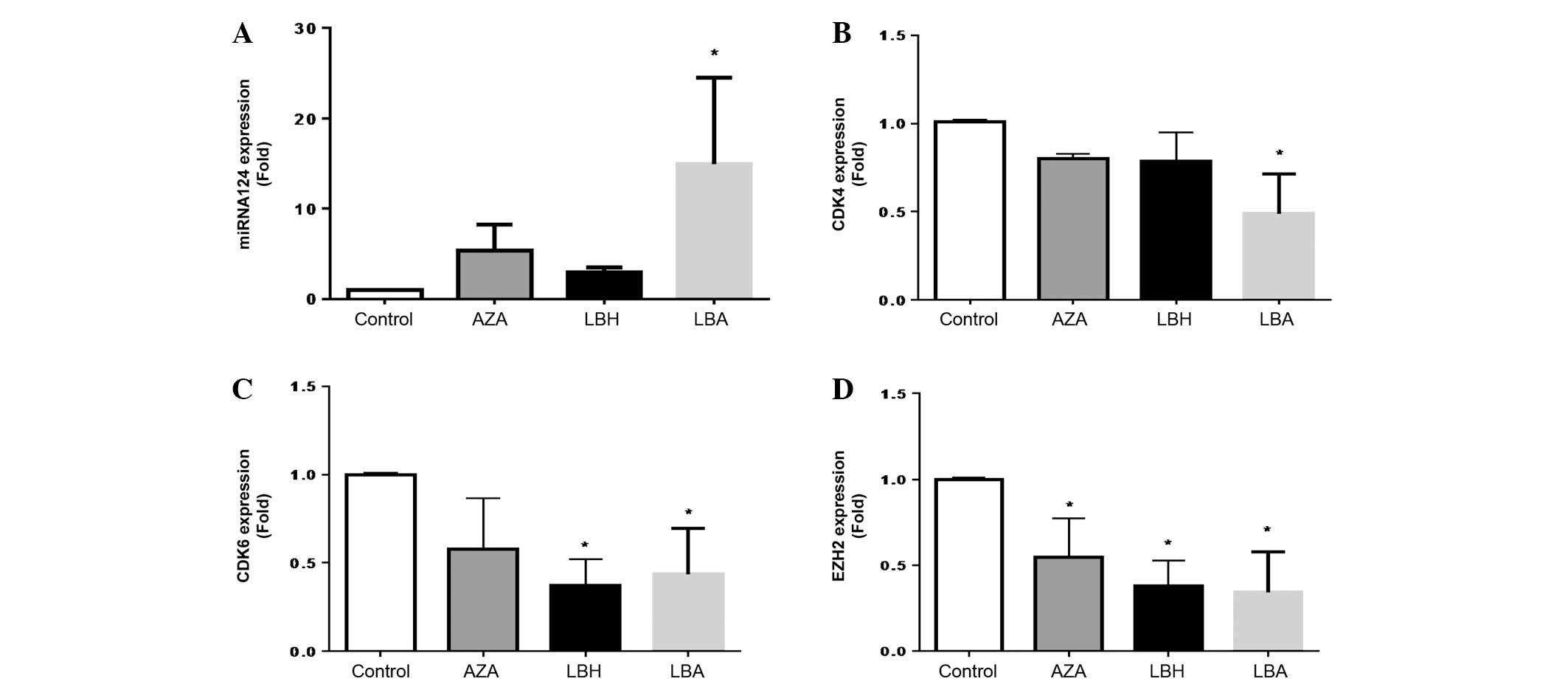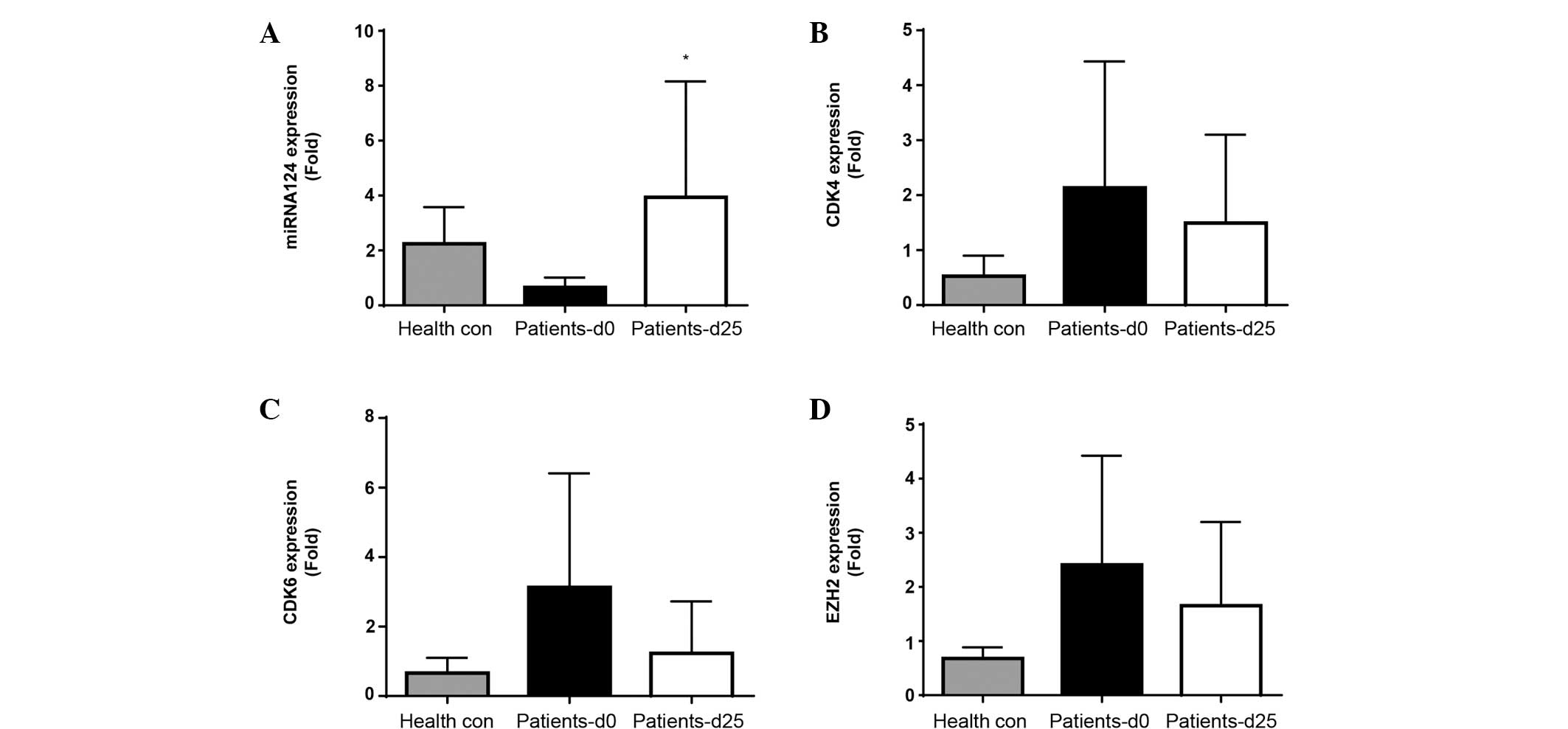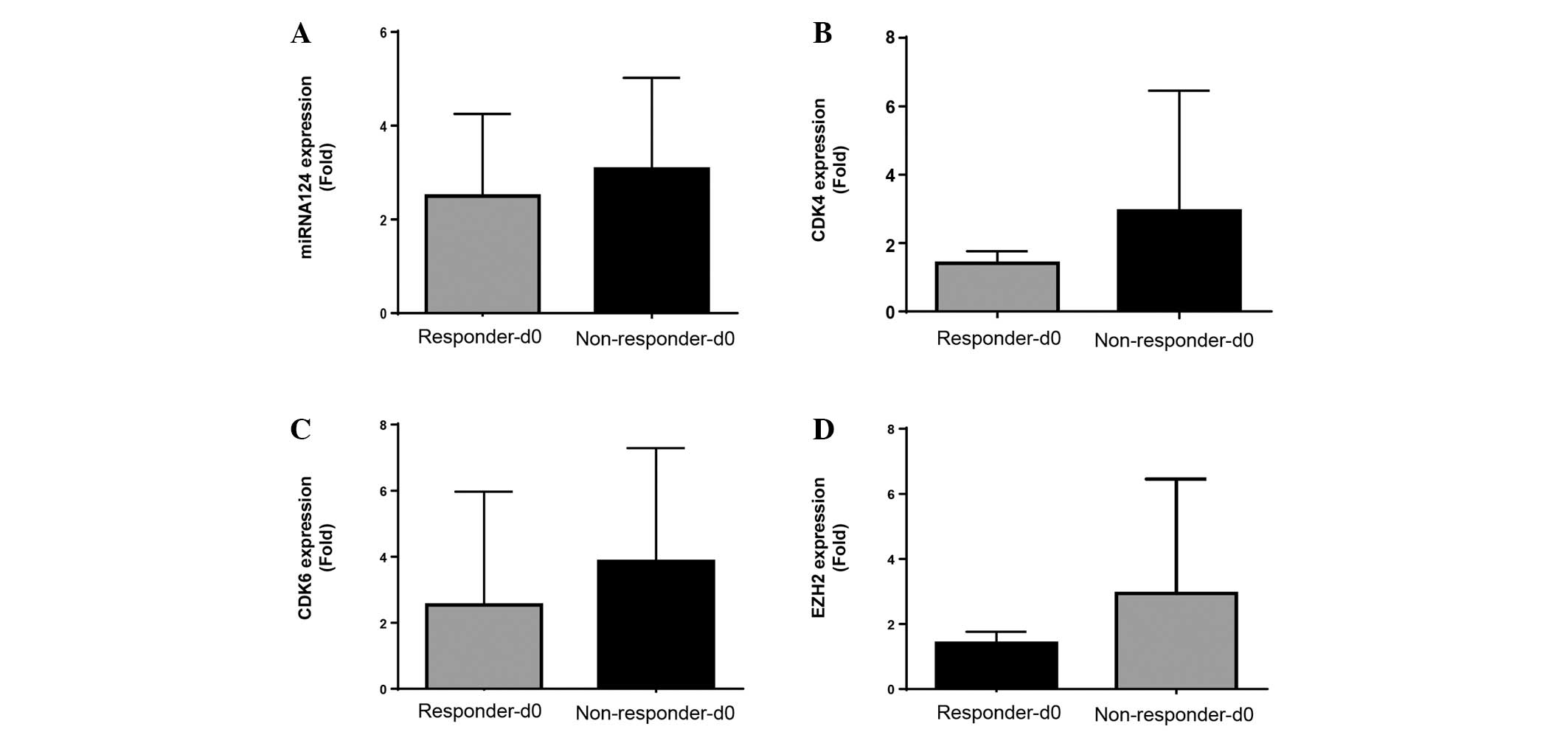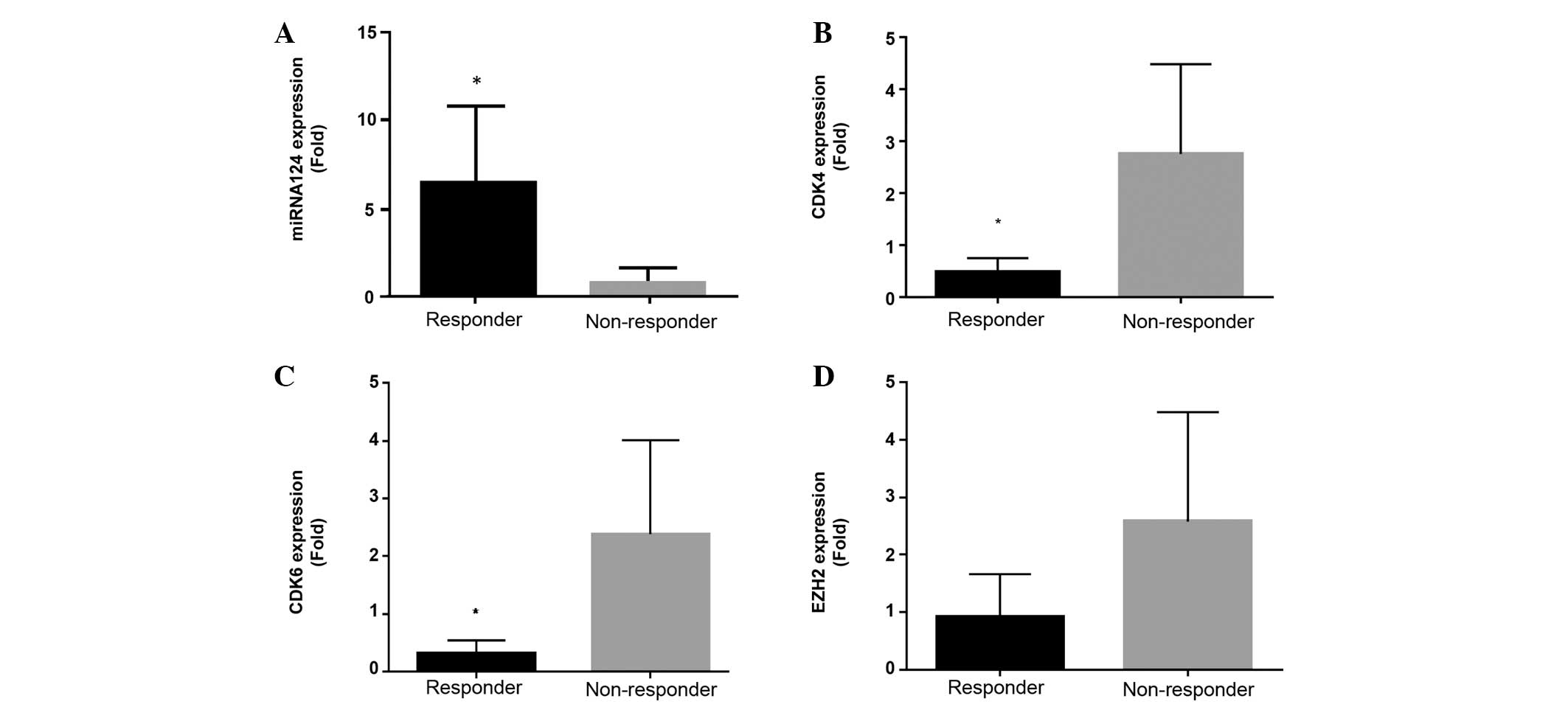|
1
|
Vasilatou D, Papageorgiou SG, Dimitriadis
G and Pappa V: Epigenetic alterations and microRNAs: New players in
the pathogenesis of myelodysplastic syndromes. Epigenetics.
8:561–570. 2013. View Article : Google Scholar : PubMed/NCBI
|
|
2
|
Tan PT and Wei AH: The epigenomics
revolution in myelodysplasia: A clinico-pathological perspective.
Pathology. 43:536–546. 2011. View Article : Google Scholar : PubMed/NCBI
|
|
3
|
Fenaux P, Mufti GJ, Hellstrom-Lindberg E,
Santini V, Finelli C, Giagounidis A, Schoch R, Gattermann N, Sanz
G, List A, et al: Efficacy of azacitidine compared with that of
conventional care regimens in the treatment of higher-risk
myelodysplastic syndromes: A randomised, open-label, phase III
study. Lancet Oncol. 10:223–232. 2009. View Article : Google Scholar : PubMed/NCBI
|
|
4
|
Ornstein MC, Mukherjee S and Sekeres MA:
More is better: Combination therapies for myelodysplastic
syndromes. Best Pract Res Clin Haematol. 28:22–31. 2015. View Article : Google Scholar : PubMed/NCBI
|
|
5
|
Chen CZ: MicroRNAs as oncogenes and tumor
suppressors. N Engl J Med. 353:1768–1771. 2005. View Article : Google Scholar : PubMed/NCBI
|
|
6
|
Dickstein J, Senyuk V, Premanand K,
Laricchia-Robbio L, Xu P, Cattaneo F, Fazzina R and Nucifora G:
Methylation and silencing of miRNA-124 by EVI1 and self-renewal
exhaustion of hematopoietic stem cells in murine myelodysplastic
syndrome. Proc Natl Acad Sci USA. 107:9783–9788. 2010. View Article : Google Scholar : PubMed/NCBI
|
|
7
|
Xia Q, Hu J and Meng YS: Abnormal
expression of microRNA-124 in patients with leukemia or
myelodysplastic syndrome and its significance. Zhongguo Shi Yan Xue
Ye Xue Za Zhi. 20:358–361. 2012.PubMed/NCBI
|
|
8
|
Castoro RJ, Dekmezian M, Saraf AJ,
Watanabe Y, Chung W, Adhab SE, Jelinek J and Issa JP: MicroRNA 124
and its role in response to epigenetic therapy in patients with
acute myelogenous leukemia and myelodysplastic syndrome. Blood.
112:5982008.
|
|
9
|
Lujambio A, Ropero S, Ballestar E, Fraga
MF, Cerrato C, Setién F, Casado S, Suarez-Gauthier A,
Sanchez-Cespedes M, Git A, et al: Genetic unmasking of an
epigenetically silenced microRNA in human cancer cells. Cancer Res.
67:1424–1429. 2007. View Article : Google Scholar : PubMed/NCBI
|
|
10
|
Tan P, Wei A, Mithraprabhu S, Cummings N,
Liu HB, Perugini M, Reed K, Avery S, Patil S, Walker P, et al: Dual
epigenetic targeting with panobinostat and azacitidine in acute
myeloid leukemia and high-risk myelodysplastic syndrome. Blood
Cancer J. 4:e1702014. View Article : Google Scholar : PubMed/NCBI
|
|
11
|
Cheson BD, Greenberg PL, Bennett JM,
Lowenberg B, Wijermans PW, Nimer SD, Pinto A, Beran M, de Witte TM,
Stone RM, et al: Clinical application and proposal for modification
of the International Working Group (IWG) response criteria in
myelodysplasia. Blood. 108:419–425. 2006. View Article : Google Scholar : PubMed/NCBI
|
|
12
|
Livak KJ and Schmittgen TD: Analysis of
relative gene expression data using real-time quantitative PCR and
the 2 (−Delta Delta C(T)) Method. Methods. 25:402–408. 2001.
View Article : Google Scholar : PubMed/NCBI
|
|
13
|
Liu HB, Mayes PA, Perlmutter P, McKendrick
JJ and Dear AE: The anti-leukemic effect and molecular mechanisms
of novel hydroxamate and benzamide histone deacetylase inhibitors
with 5-aza-cytidine. Int J Oncol. 38:1421–1425. 2011.PubMed/NCBI
|
|
14
|
Wong KY, So CC, Loong F, Chung LP, Lam WW,
Liang R, Li GK, Jin DY and Chim CS: Epigenetic inactivation of the
miR-124-1 in haematological malignancies. PLoS One. 6:e190272011.
View Article : Google Scholar : PubMed/NCBI
|
|
15
|
Agirre X, Vilas-Zornoza A, Jiménez-Velasco
A, Martin-Subero JI, Cordeu L, Gárate L, San José-Eneriz E,
Abizanda G, Rodríguez-Otero P, Fortes P, et al: Epigenetic
silencing of the tumor suppressor microRNA Hsa-miR-124a regulates
CDK6 expression and confers a poor prognosis in acute lymphoblastic
leukemia. Cancer Res. 69:4443–4453. 2009. View Article : Google Scholar : PubMed/NCBI
|
|
16
|
Chen X, He D, Dong XD, Dong F, Wang J,
Wang L, Tang J, Hu DN, Yan D and Tu L: MicroRNA-124a is
epigenetically regulated and acts as a tumor suppressor by
controlling multiple targets in uveal melanoma. Invest Ophthalmol
Vis Sci. 54:2248–2256. 2013. View Article : Google Scholar : PubMed/NCBI
|
|
17
|
Chang CJ and Hung MC: The role of EZH2 in
tumour progression. Br J Cancer. 106:243–247. 2012. View Article : Google Scholar : PubMed/NCBI
|
|
18
|
Sashida G, Harada H, Matsui H, Oshima M,
Yui M, Harada Y, Tanaka S, Mochizuki-Kashio M, Wang C, Saraya A, et
al: Ezh2 loss promotes development of myelodysplastic syndrome but
attenuates its predisposition to leukaemic transformation. Nat
Commun. 5:41772014. View Article : Google Scholar : PubMed/NCBI
|
|
19
|
Herrera-Merchan A, Arranz L, Ligos JM, de
Molina A, Dominguez O and Gonzalez S: Ectopic expression of the
histone methyltransferase Ezh2 in haematopoietic stem cells causes
myeloproliferative disease. Nat Commun. 3:6232012. View Article : Google Scholar : PubMed/NCBI
|
|
20
|
Tanaka S, Miyagi S, Sashida G, Chiba T,
Yuan J, Mochizuki-Kashio M, Suzuki Y, Sugano S, Nakaseko C, Yokote
K, et al: Ezh2 augments leukemogenicity by reinforcing
differentiation blockage in acute myeloid leukemia. Blood.
120:1107–1117. 2012. View Article : Google Scholar : PubMed/NCBI
|
|
21
|
Agarwal P, Alzrigat M, Párraga AA, Enroth
S, Singh U, Ungerstedt J, Österborg A, Brown PJ, Ma A, Jin J, et
al: Genome-wide profiling of histone H3 lysine 27 and lysine 4
trimethylation in multiple myeloma reveals the importance of
Polycomb gene targeting and highlights EZH2 as a potential
therapeutic target. Oncotarget. 7:6809–6823. 2016.PubMed/NCBI
|
|
22
|
Bose P, Simmons GL and Grant S:
Cyclin-dependent kinase inhibitor therapy for hematologic
malignancies. Expert Opin Investig Drugs. 22:723–738. 2013.
View Article : Google Scholar : PubMed/NCBI
|
|
23
|
Fandy TE, Herman JG, Kerns P, Jiemjit A,
Sugar EA, Choi SH, Yang AS, Aucott T, Dauses T, Odchimar-Reissig R,
et al: Early epigenetic changes and DNA damage do not predict
clinical response in an overlapping schedule of 5-azacytidine and
entinostat in patients with myeloid malignancies. Blood.
114:2764–2773. 2009. View Article : Google Scholar : PubMed/NCBI
|













